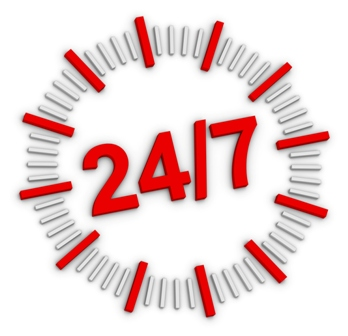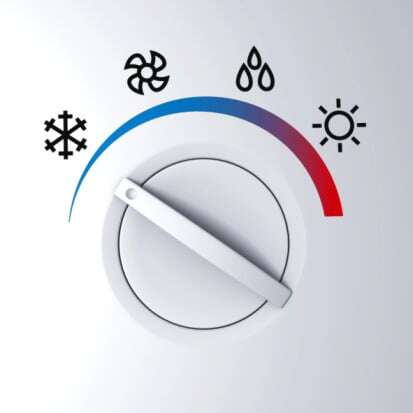![]() If one room or area of your home often feels too warm or too cool, you probably have what heating and air conditioning experts refer to as an air flow problem. So what exactly is causing this problem? It could be a leaky, blocked or damaged duct. Or the problem could be traced directly to your air conditioner or furnace.
If one room or area of your home often feels too warm or too cool, you probably have what heating and air conditioning experts refer to as an air flow problem. So what exactly is causing this problem? It could be a leaky, blocked or damaged duct. Or the problem could be traced directly to your air conditioner or furnace.
You can determine if your home has an air flow problem by performing the garbage bag air flow test – so named because the goal is to determine how long it takes for a garbage bag to fill with air (or whether it does it all).
This test is fun, but it's no joke
The garbage bag air flow test is a legitimate test developed and advanced by the fine folks with the Canada Mortgage and Housing Corporation. Builders and contractors “up north” have been using the test in forced-air homes since the 1990s, and its application extends to the efficiency of exhaust fans, too.
Is the garbage bag air flow test as accurate as an air flow test conducted by a heating and air conditioning expert or building engineer with high-tech tools? No, and the CMHC makes no bones about the test producing somewhat imprecise results. However, the test does offer legitimate guidance and, if done properly, can point out air flow problems in a home with surprising accuracy.
Perhaps the best part? The test takes only about 10 minutes to conduct and requires no high-tech gadgets; you need only a small garbage bag (about 26-by-36 inches), a wire hanger, masking tape and a watch with a second hand. (While the CMHC notes that large – or 31-by-47-inch – garbage bags can be used, the smaller size is easier to manage).
The kids will want to get in on the act, too, especially if they're hunting for a creative idea for a science class experiment. Turn your vents and registers into a real-life science lab – and find out if your home has a bona fide air flow problem once and for all.
No need to study for this simple test
Get started by making your garbage bag air flow tester:
- Wrap the wire hanger around the opening of the garbage bag. The final shape probably will resemble a circle or rectangle; it doesn't matter which one as long as you tape the hanger securely in place so that the bag stays open.
- Place the bag on the floor and, moving from the bottom up, crush the air out of the bag. For obvious reasons, now is a good time to check that the bag is unmarred by tears or holes.
- Place the open end of the deflated bag over a supply register.
- Count how many seconds it takes for the bag to fully inflate. If you lose your grip on the bag, simply do the test again.
(Note: you are correct to presume that you can do an inverse air flow test by filling the bag with air – waving it over your head a few times should do the trick – placing it over a return air register and then counting how many seconds it takes for the bag to deflate. But the CMHC warns that “deflation testing is not as accurate as inflation testing”).
Decipher the results
Here's where things get a little technical. Air flow is measured in terms of cubic feet per minute – more commonly referred to as the abbreviation CFM. Home Energy Magazine says that a “two-second inflation (75 CFM) is a healthy, robust flow. An inflation of less than 10 CFM (roughly 15 seconds) is almost comically slow.”
The visual nature of the garbage bag air flow test is rather convincing, especially if you conduct it at various registers in your home and see obvious discrepancies in the length of time it takes for the garbage bag to fill with air.
Don't make the mistake of ignoring such a problem or hoping that it will “work itself out” with time. It's possible that you might be more sensitive to a too-warm or too-cool area of your home at only certain times of the year.
But the underlying air flow problem, especially if it's related to your ductwork, requires a repair or you will risk not only physical comfort, but wasting energy and untold dollars on your utility bills.
If readings from this test point to air flow problems in your home, consider contacting a heating and air conditioning company like Experts In Your Home to find the source of the problem and repair it. Our heating and air conditioning technicians serve the Chico area, including the surrounding communities of Oroville, Paradise, Magalia, Durham & More.







